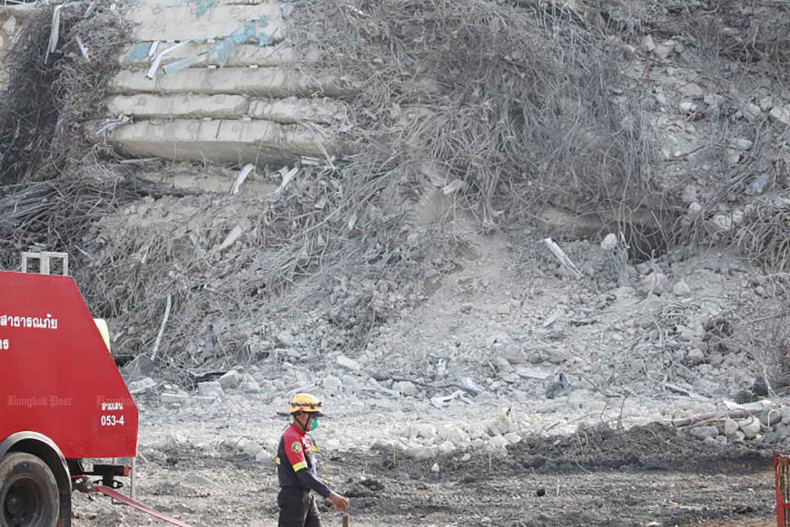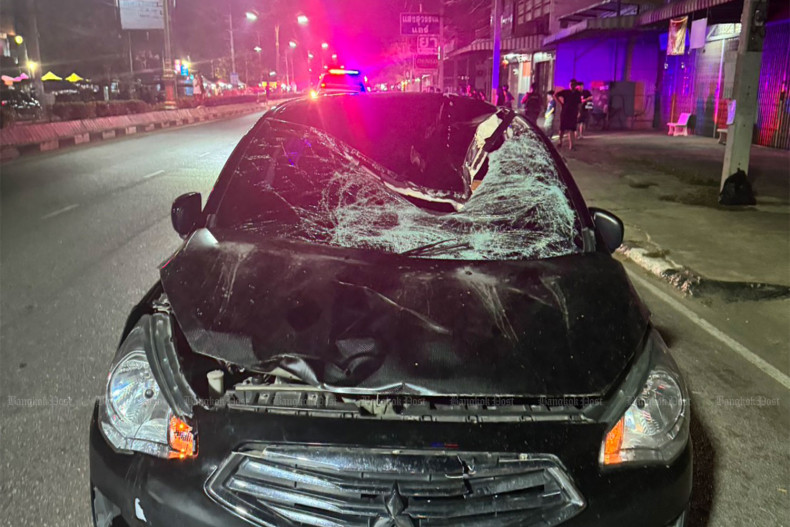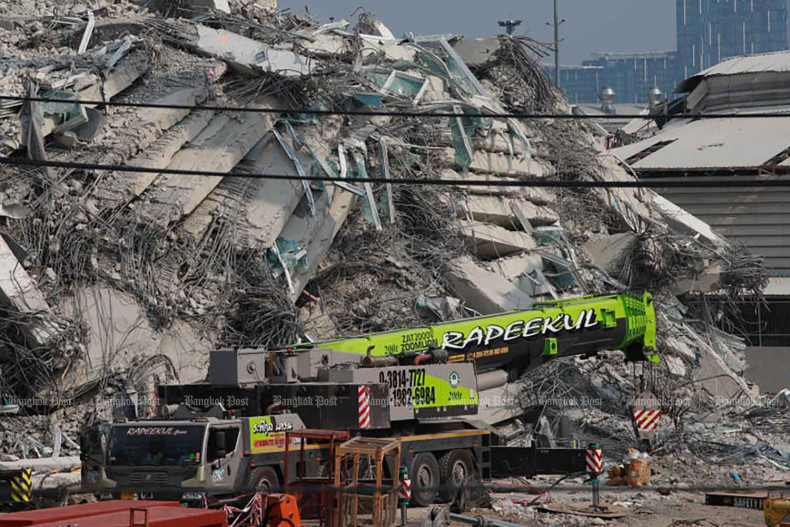7 APR 2025 | 06:17:52 GMT+7

THAILAND
7 Apr 2025
Govt to buy more from US

BUSINESS
7 Apr 2025
Rocked but resilient

THAILAND
7 Apr 2025
Rescuers push forward despite odds

THAILAND
7 Apr 2025
Govt to buy more from US

BUSINESS
7 Apr 2025
Rocked but resilient

THAILAND
7 Apr 2025
Rescuers push forward despite odds
-
1
Japan issues megaquake warning, but many travellers from Hong Kong undeterred
-
2
Old cracks cause alarm, evacuation of Bangkok buildings
-
3
‘Substandard steel’ used in collapsed Bangkok tower
-
4
Thai govt warns over 'earthquake drunk' syndrome
-
5
China urges Philippine not to play with fire on Taiwan question
-
general | 06 Apr 2025
SAO probe panel needs more time
-
GENERAL | 03:51
Rescuers push forward despite odds
-
GENERAL | 03:41
Ministry sets out compensation offer
-
GENERAL | 03:22
Casino bill could land govt in hot water

POLITICS | 6 Apr 2025
Bhumjaithai Party debuts new all-blue logo
-
politics | 01 Apr 2025
Bribe-stripped MP's wife takes over after election rerun win
-
politics | 01 Apr 2025
Casino push is too fast, critics say
-
POLITICS | 6 Apr 2025
Council's ethics probe delay concerning Thaksin Shinawatra draws flak
-
POLITICS | 6 Apr 2025
Critic questions approach to US tariffs
-
SPECIAL REPORT | 30 Mar 2025
Censure fails to make a mark
-
SPECIAL REPORT | 29 Mar 2025
New giveaway, old problems
-
SPECIAL REPORT | 23 Mar 2025
Crunch debate to test Pheu Thai
-
SPECIAL REPORT | 17 Mar 2025
US' DEI curbs spark local fears
-
PR NEWS | 5 Apr 2025
FarmSuk Rewards 200 Customers with Asia Tour
-
PR NEWS | 4 Apr 2025
FTI and Mahidol University pioneer smart farming project
-
PR NEWS | 4 Apr 2025
Scrap Metal Art Supports Thai Elephant Conservation
-
PR NEWS | 4 Apr 2025
Khao Chae Featured in Songkran Menu at Salathip
-
PEOPLE | 2 Apr 2025
Chadchart Sittipunt: The Strongest Man in Governance
-
PEOPLE | 27 Mar 2025
Aelm Thavornsiri: Fights On, Beyond the Spotlight
-
PEOPLE | 19 Mar 2025
New Chayapak: The Phenomenal Rise behind “Four-Mod” Gelboys
-
PEOPLE | 17 Mar 2025
Lek Patravadi: The Visionary Who Revolutionized Thai Theatre and Took on Hollywood
-
general | 05 Apr 2025
Cybercrime laws to be changed soon
-
general | 06 Apr 2025
Driving high performance in a BANI world
-
GENERAL | 04:03
Marrying energy and the environment
-
GENERAL | 03:55
Rocked but resilient

MOTORING | 28 Mar 2025
DUP/Thai auto sector frets over planned US tariffs
-
MOTORING | 27 Mar 2025
Thai auto sector urged to brace for impact of US tariffs
-
MOTORING | 26 Mar 2025
Pickup loan scheme to aid economy by B21bn
-
MOTORING | 26 Mar 2025
Car producers postpone export models
-
MOTORING | 25 Mar 2025
BYD sales pass $100 billion, topping Tesla

INVESTMENT | 4 Apr 2025
KTAM predicts asset growth of 10% this year
-
INVESTMENT | 3 Apr 2025
Gold steadies after hitting all-time high
-
INVESTMENT | 1 Apr 2025
Trump's trade war: Thailand faces grim economic outlook
-
INVESTMENT | 31 Mar 2025
Sustainable investing the new standard
-
INVESTMENT | 31 Mar 2025
More than 50 Thai ESG X funds planned for May unveiling
Currency/Baht
Buy (Baht)
Sell (Baht)
33.9932
34.3043
44.0263
44.8282
37.066
37.7889
22.8084
23.4525
4.3601
4.4226
4.6538
4.7521
Source: Bank of Thailand (07 Apr 2025)
BANGKOK
Clouds
27°/29°
CHIANG MAI
Clouds
21°/24°
PATTAYA
Clouds
26°/26°
SURAT THANI
Clouds
26°/26°
PHUKET
Clouds
27°/27°
KANCHANABURI
Clouds
26°/26°
Source: openweathermap.org (07 Apr 2025)
SET
1,125.21
-36.60
SET50
715.17
-26.50
SET50FF
722.17
-23.08
SET100
1,540.68
-56.57
SET100FF
1,558.16
-49.97
sSET
592.83
-13.44
SETCLMV
581.72
-23.01
Source: settrade.com (07 Apr 2025)
Buy (Baht)
Sell (Baht)
GOLD (1 BAHT WEIGHT, 96.5%)
Buy (Baht)49,600.00
Sell (Baht)49,700.00
ORNAMENT (1 BAHT WEIGHT, 96.5%)
Buy (Baht)48,709.08
Sell (Baht)50,500.00
Source: GoldTraders (07 Apr 2025)
Date: 07 Apr 2025
Type
Today
Tomorrow
46.14
46.14
31.94
31.94
48.84
48.84
29.79
29.79
Type
Today
Tomorrow
33.28
33.28
33.65
33.65
Effective and projected prices as at ,
CHECK OUT YOUR WEEKLY HOROSCOPE
STAY INFORMED.
GET DAILY UPDATES FROM THE BANGKOK POST.
By subscribing, you accept the terms and conditions in our privacy policy.














































